Courtyard gardens offer a unique opportunity to blend indoor and outdoor living, creating a private sanctuary tailored to your style. Modern courtyard design embraces clean lines, purposeful layouts, and a harmonious balance between nature and structure. From lush, tropical escapes to minimalist retreats, discover how to transform your courtyard.
Explore inspiring ideas, including geometric precision, creative pathways, and the strategic use of greenery. Learn to maximize space, enhance privacy, and incorporate elements that reflect your personality, turning your courtyard into a breathtaking extension of your home.
Whether you favor sleek, contemporary aesthetics or a more traditional feel, the right design choices can create an outdoor oasis.
1/25. Create a Tropical Escape
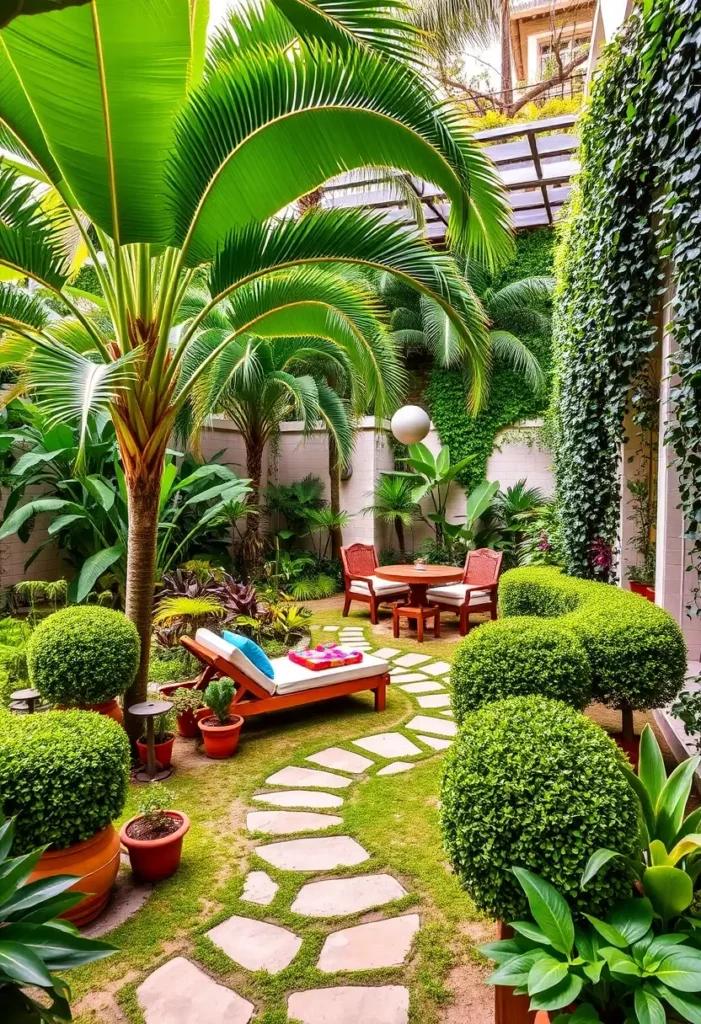
Embrace a lush, vibrant atmosphere with dense, layered plantings. Palm trees, sculpted shrubs, and inviting pathways establish a relaxing, private sanctuary.
2/25. Embrace Geometric Precision
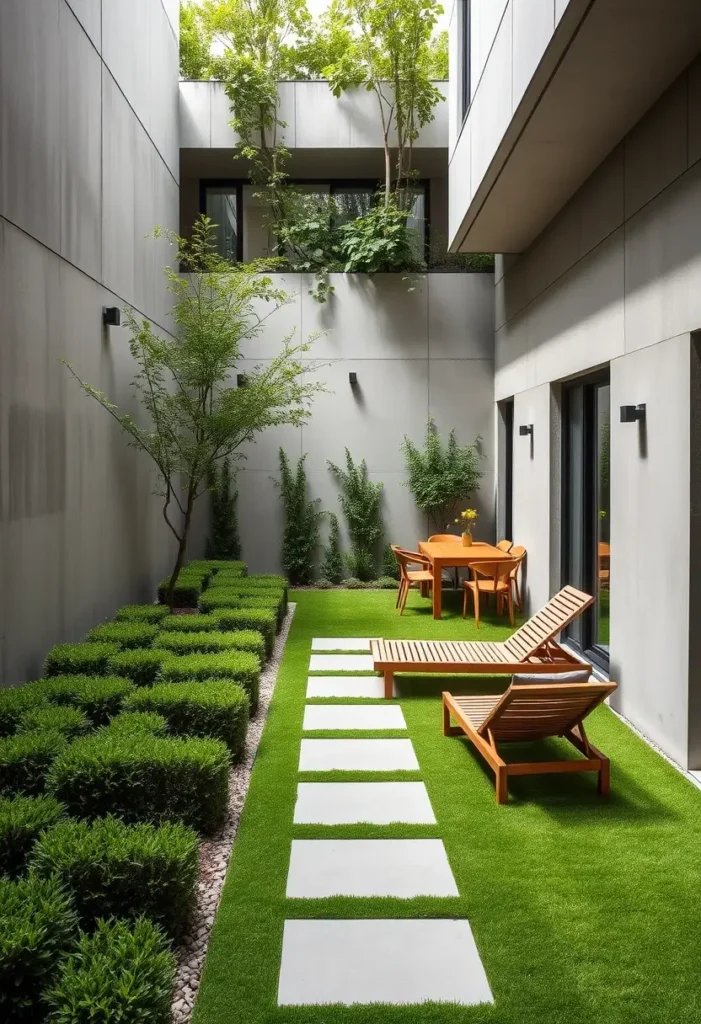
Utilize sharply defined lines and geometric shapes in both planting and hardscaping. Boxwood hedges, rectangular paving stones, and sleek architecture create a clean, contemporary feel.
3/25. Incorporate Climbing Vines and Soft Textures
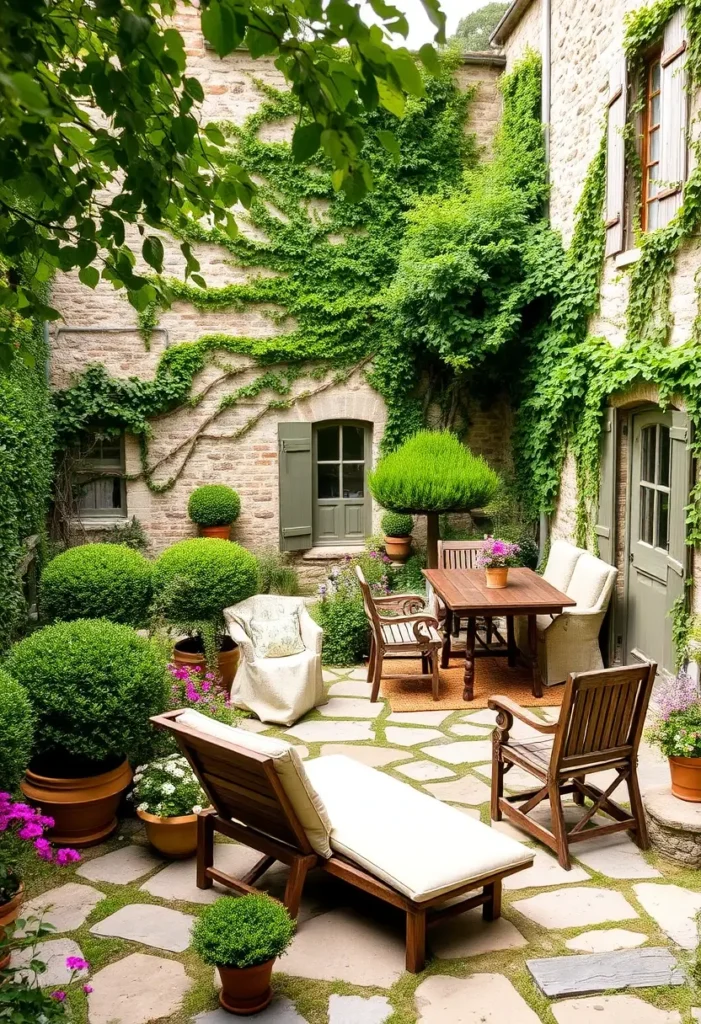
Encourage climbing plants to soften stone walls and create a sense of enclosure. Combine with rounded shrubs and potted flowers for a welcoming, traditional ambiance.
4/25. Blend Traditional and Modern Elements
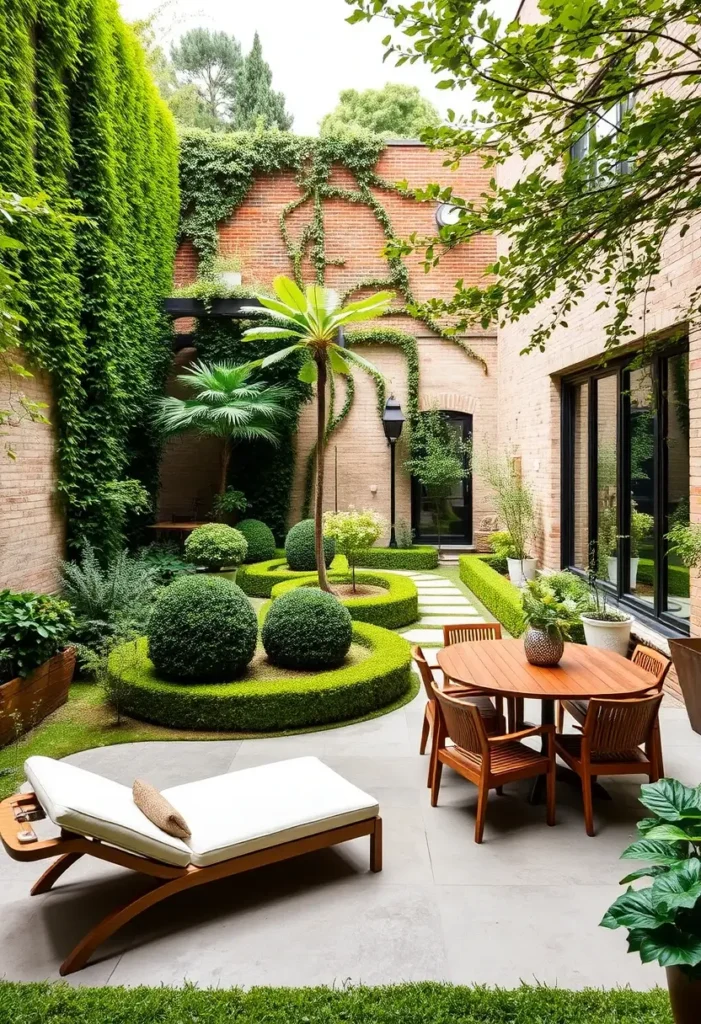
Combine classic materials like brick with neatly sculpted hedges and geometric planting beds. This creates a sophisticated, transitional space that balances old and new.
5/25. Introduce Curvilinear Design Elements
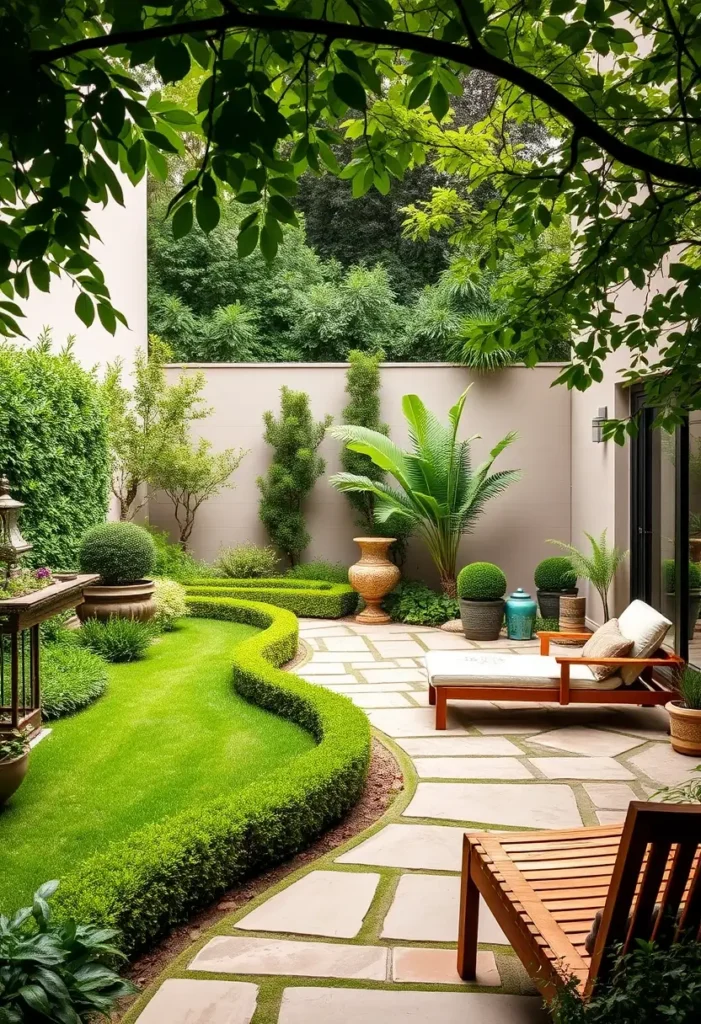
Use flowing, curved lines in pathways, planting beds, and hedges. Soften the edges, creating a more organic and relaxing atmosphere in the courtyard space.
6/25. Design a Small Formal Garden with a Twist
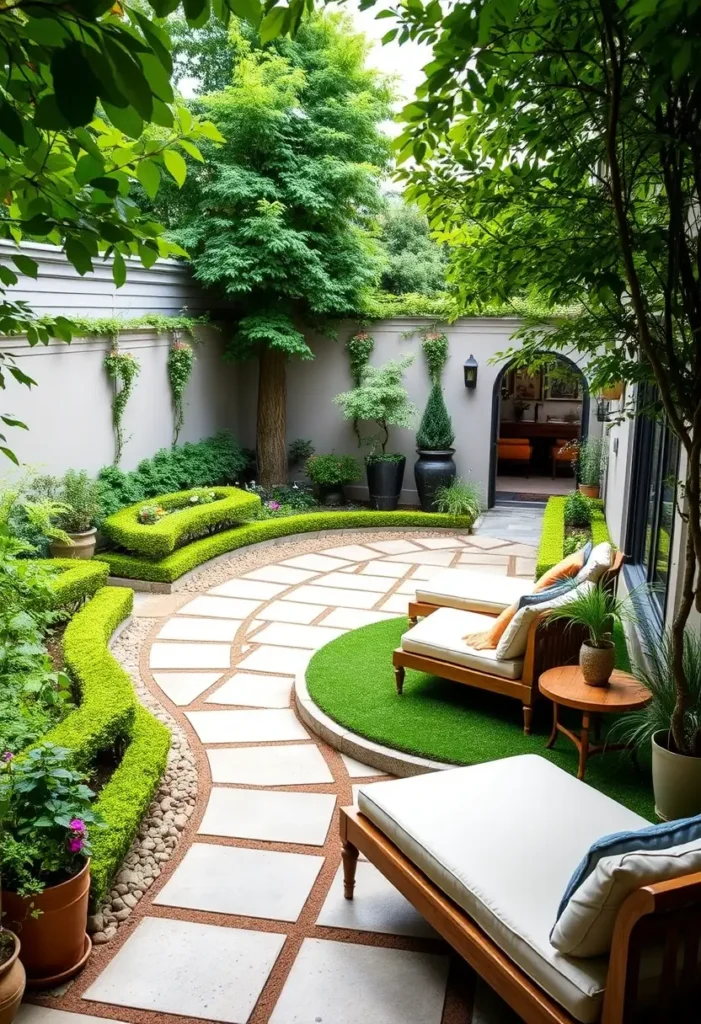
Combine structured elements like low hedges and symmetrical layouts with looser plantings. Add an element of surprise, a unique focal point or pathway.
7/25. Create Layers of Greenery

Combine climbing vines, manicured hedges, and taller plants to achieve a layered, immersive effect. Maximize vertical space to enhance the sense of privacy.
8/25. Define Spaces with Low Hedges
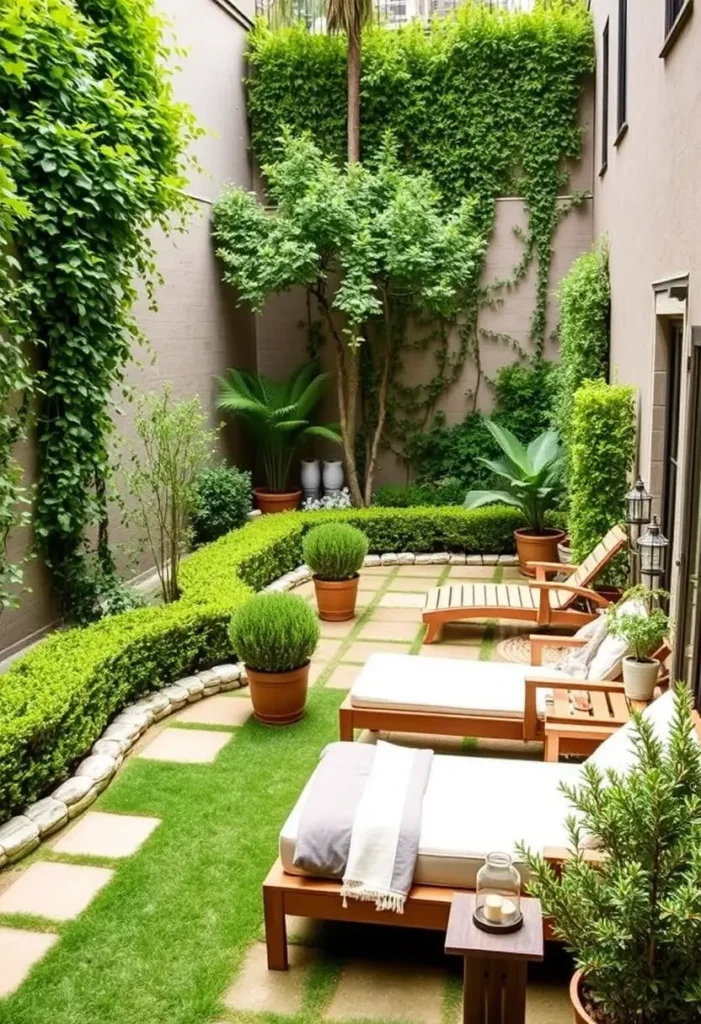
Use low, curving hedges to define different areas within the courtyard, such as a lawn or seating area. Creates visual interest and a sense of flow.
9/25. Shape a Lawn with a Defining Hedge
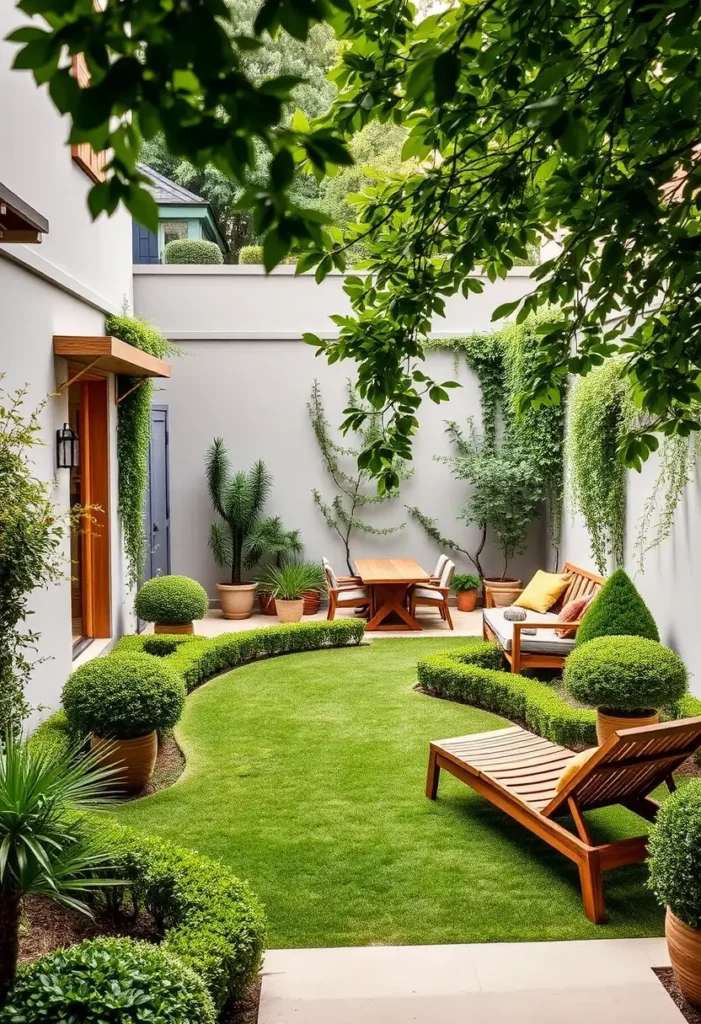
Create a focal point with a large, well-defined lawn area. Use a curved hedge to enclose and accentuate the shape, providing a contrast to surrounding planting.
10/25. Create a Dynamic Pathway with Shaped Hedges
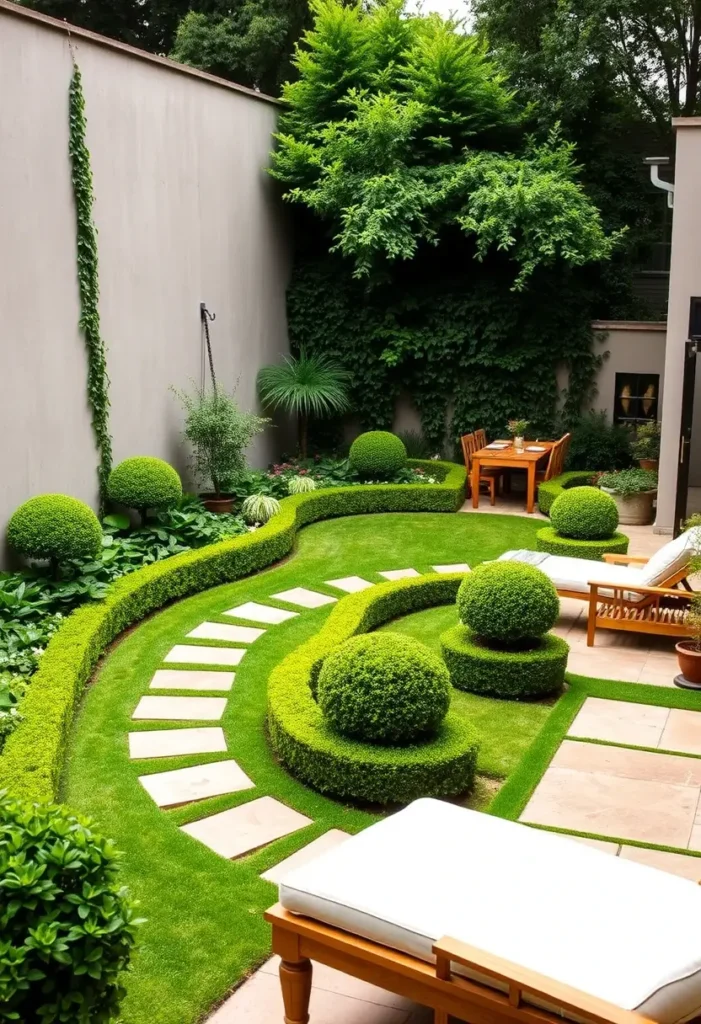
Utilize a dramatically shaped low hedge, such as an “S” curve, to create a unique pathway and divide the courtyard. Combine Common Box and a circular lawn, this adds visual interest.
11/25. Maximize Privacy with Tall Hedges

Employ tall, dense hedges and climbing vines along walls to create a secluded and private atmosphere within the courtyard. The vertical greenery envelops the space, offering a feeling of escape and tranquility from outside world.
12/25. Feature a Mature Tree as a Focal Point
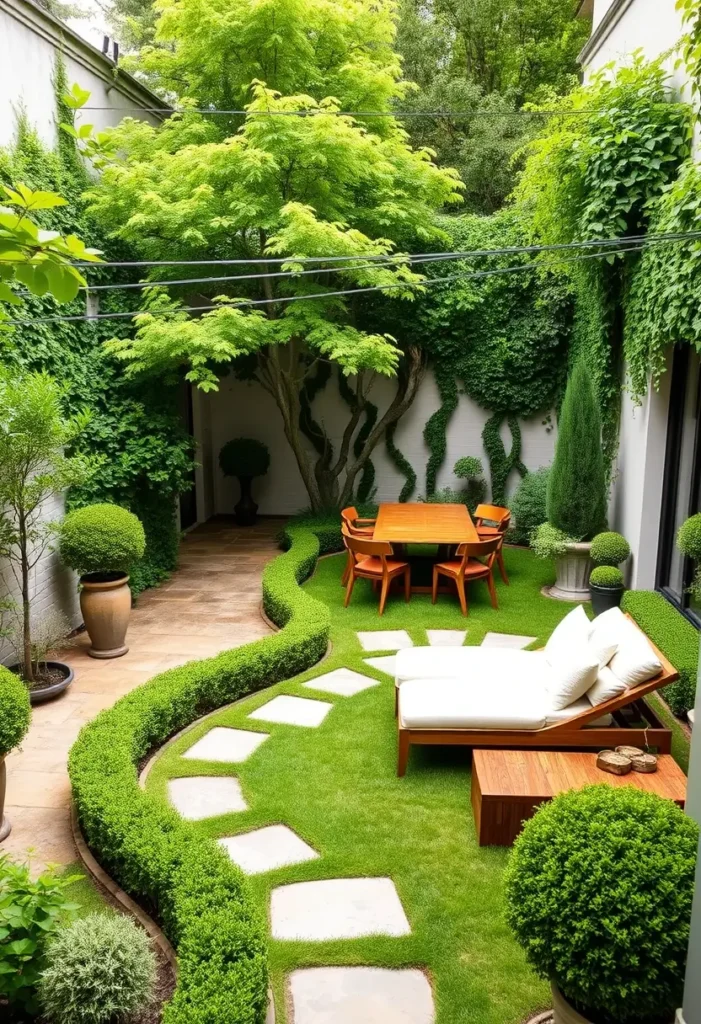
Incorporate a mature tree to provide shade, vertical interest, and a sense of established beauty. Position the tree strategically to anchor the design and draw the eye, enhancing the overall garden’s appeal.
13/25. Achieve a Pristine Look with Artificial Turf

Consider using high-quality artificial turf to create a consistently lush and perfectly manicured lawn area within the courtyard. This provides a low-maintenance, yet visually appealing, solution for a modern aesthetic garden design.
14/25. Embrace Negative Space with a Large Lawn

Create a sense of spaciousness and tranquility by incorporating a large, open lawn area. This minimalist approach emphasizes negative space, providing a calming contrast to more densely planted areas and enhancing the overall feeling.
15/25. Define Zones for Dining and Lounging

Create distinct areas for different activities, such as a dining space with a table and chairs and a separate lounging zone with comfortable seating. This maximizes the functionality and usability of the courtyard.
16/25. Incorporate a Wall-Mounted Fountain

Introduce a wall-mounted fountain as a focal point, adding a visual and auditory element to the courtyard. The gentle sound of water enhances relaxation and creates sophisticated atmosphere in limited place and wall.
17/25. Establish a Direct Pathway
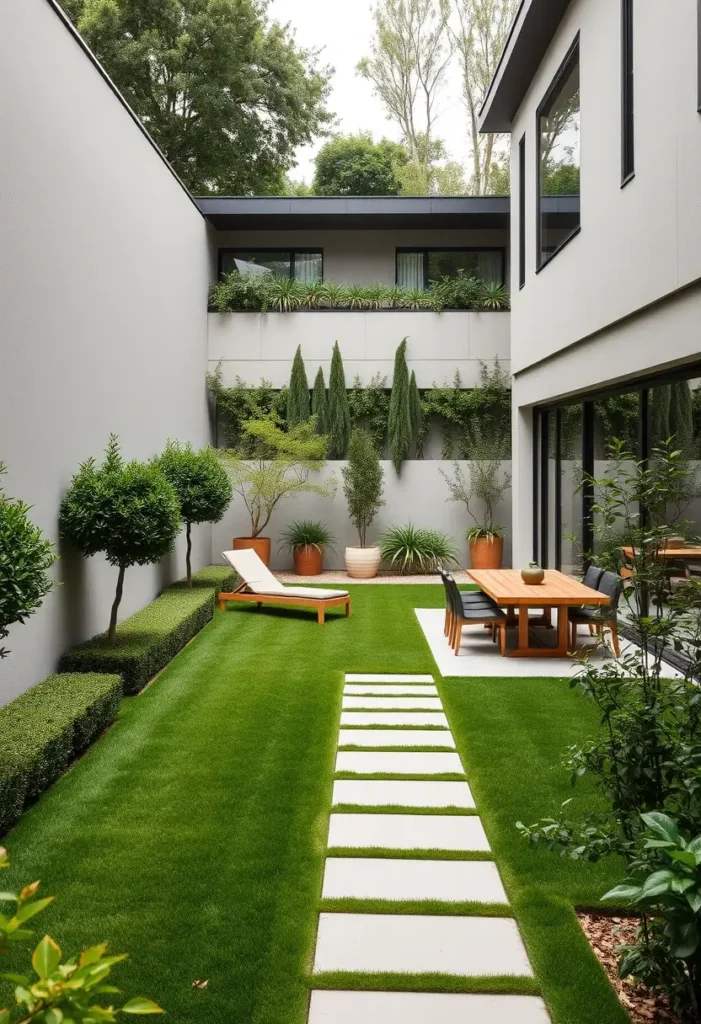
Create a strong visual axis with a straight pathway made of large, rectangular stepping stones. This draws the eye through the space, providing structure and guiding movement from the different levels from there.
18/25. Combine Artificial Grass with Columnar Trees
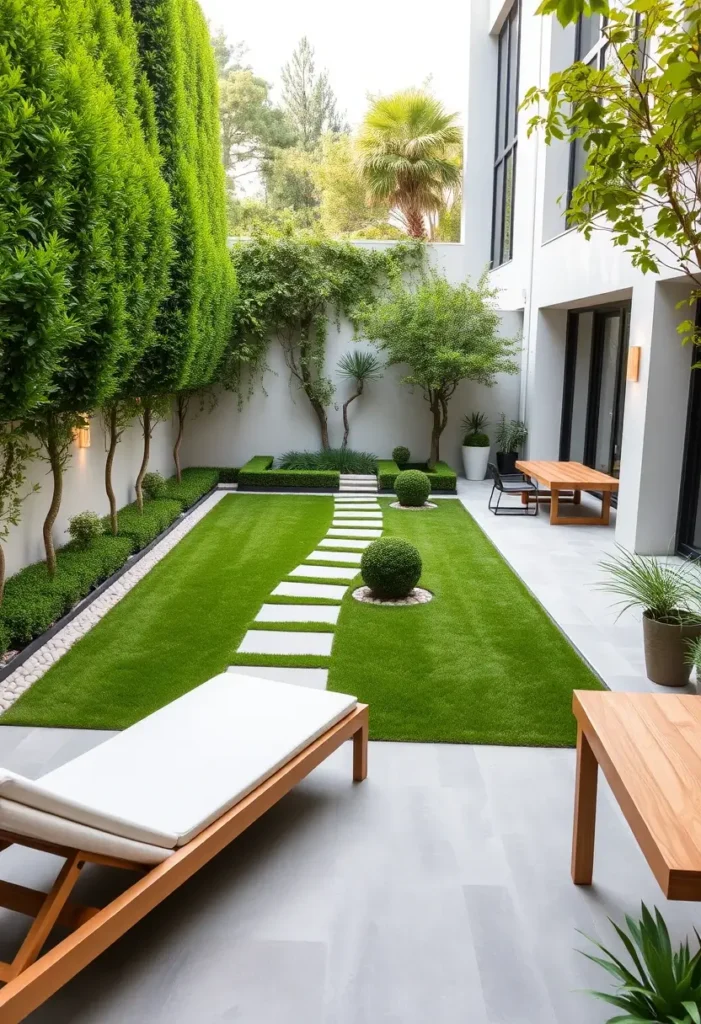
Pair a pristine artificial lawn with tall, slender trees, such as columnar evergreens. This creates a modern, low-maintenance design, emphasizing verticality and clean lines, providing an attractive and practical solution to landscape.
19/25. Maximize a Small Space with a Curved Pathway
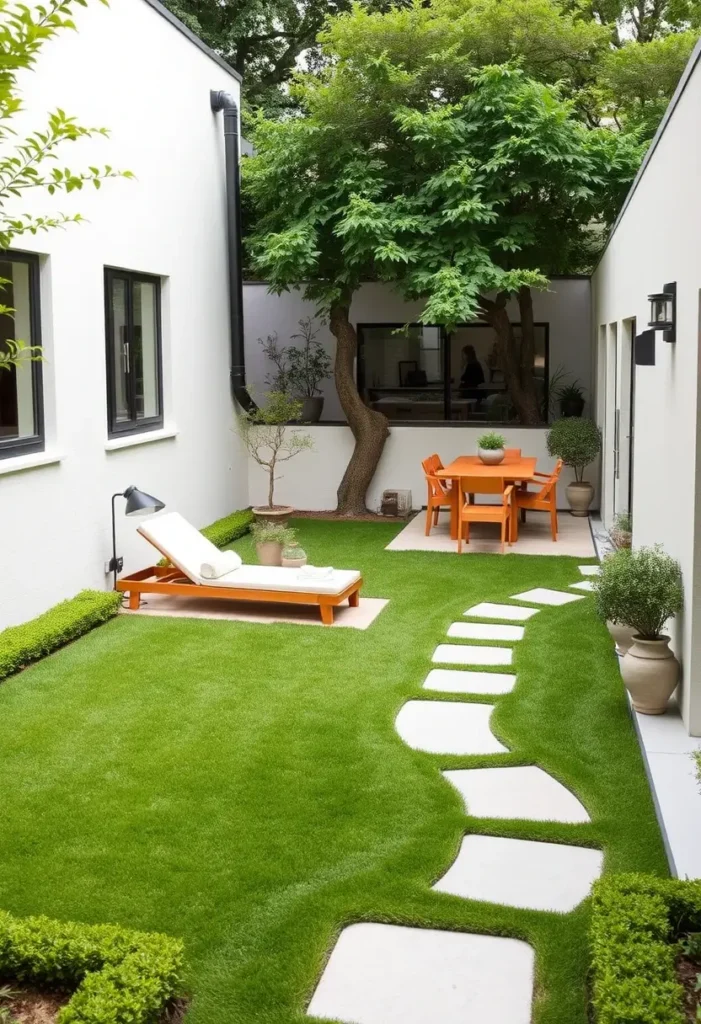
Utilize a curving pathway in a small backyard to create the illusion of more space and encourage exploration. Strategic placement of seating areas, defines zones for lounging and dining, without overcrowding.
20/25. Use Geometric Forms with Artificial Turf
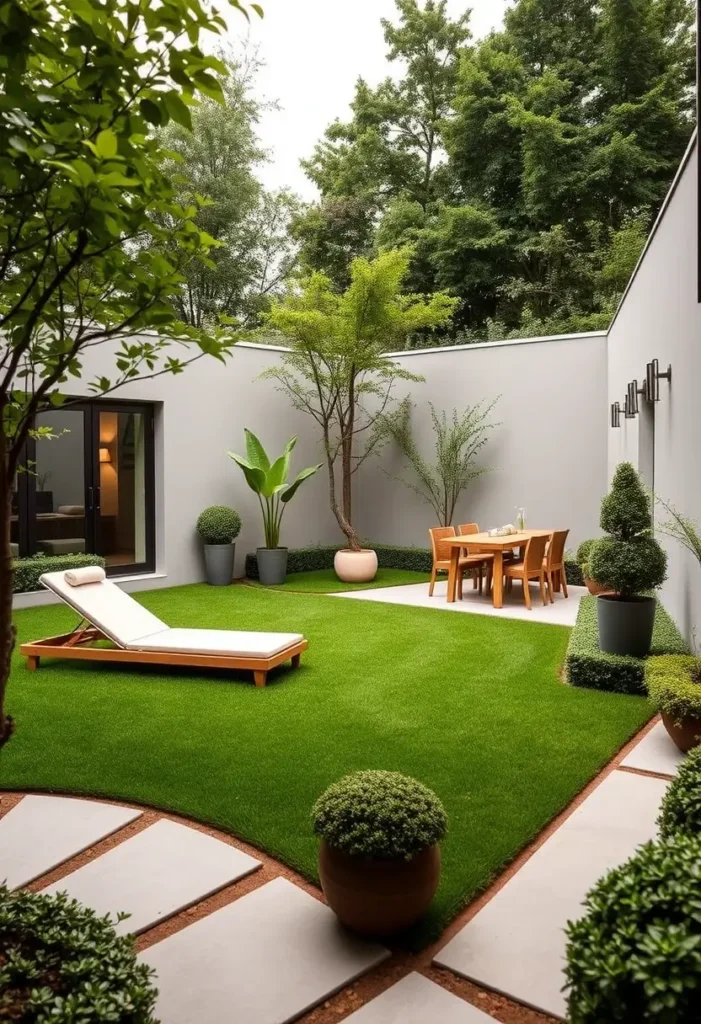
Combine the clean, consistent surface of artificial turf with geometric planting beds and pathways. The defined edges, enhance the modern aesthetic, creating a visually striking and well-ordered space, ideal for courtyards.
21/25. Create a Minimalist Retreat with Artificial Grass
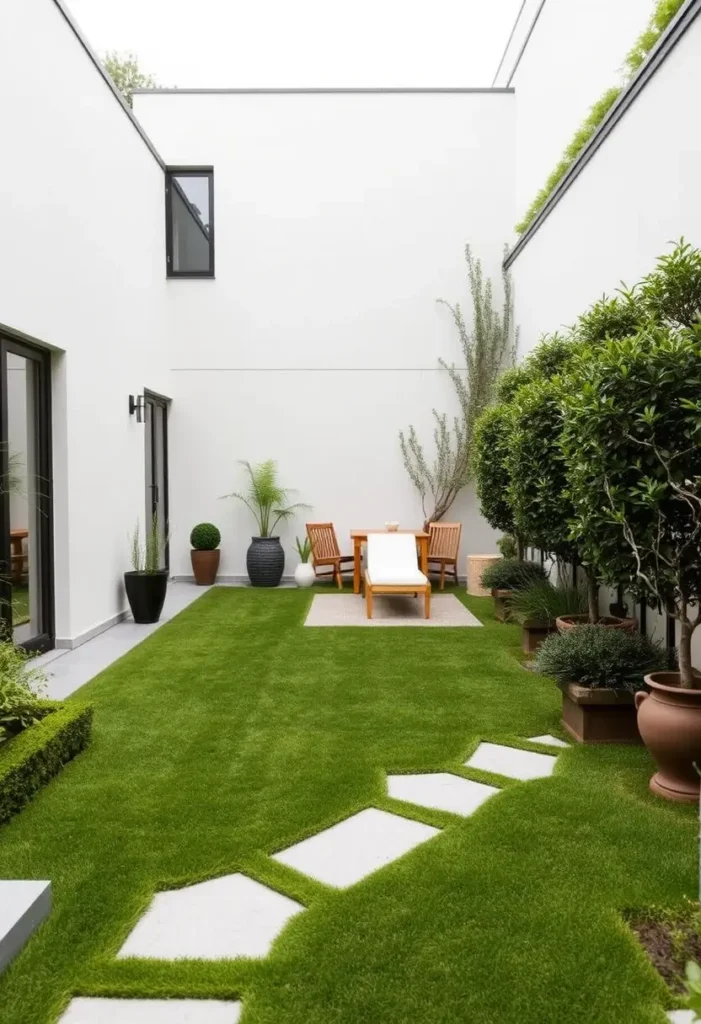
In a small backyard, utilize artificial grass to establish a low-maintenance, visually clean foundation. Incorporate a simple pathway and strategic plantings, focusing on texture and form rather than an abundance of color.
22/25. Introduce Organic Stepping Stones

Incorporate organically shaped stepping stones for the pathway to add a touch of softness and contrast to the clean lines, add a visual interest. It breaks the clean lines.
23/25. Introduce a Circular Planting Bed
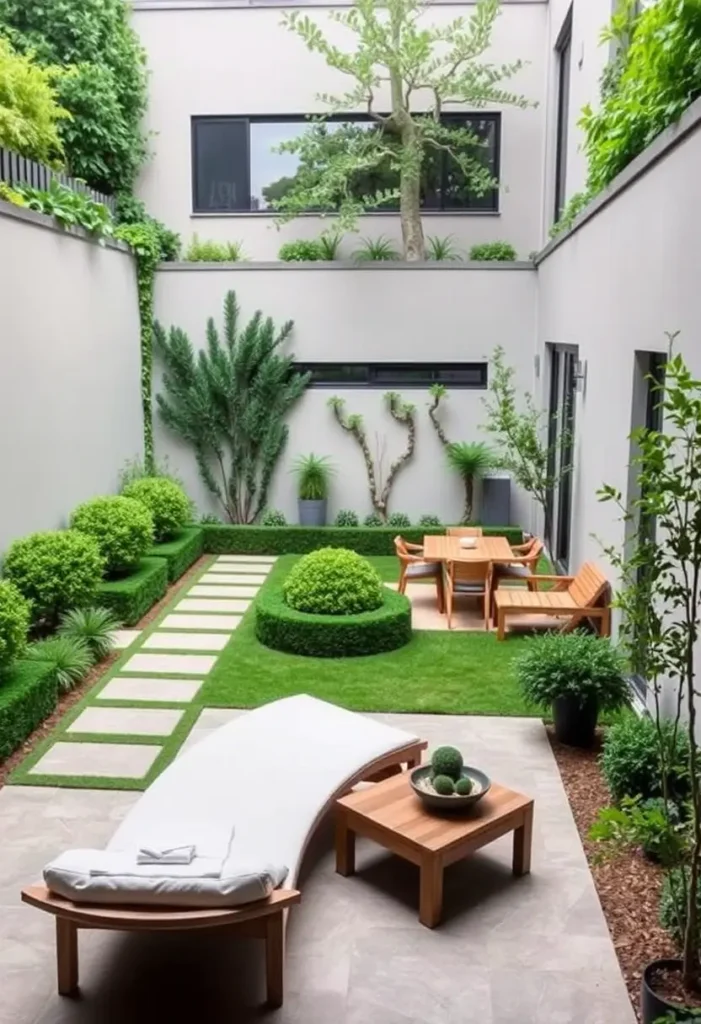
Break up a rectangular courtyard layout by incorporating a circular planting bed, ideally positioned in the center. A neatly trimmed, low, rounded hedge within this circle provides and great focal point design.
24/25. Elongate a Narrow Space with a Linear Design
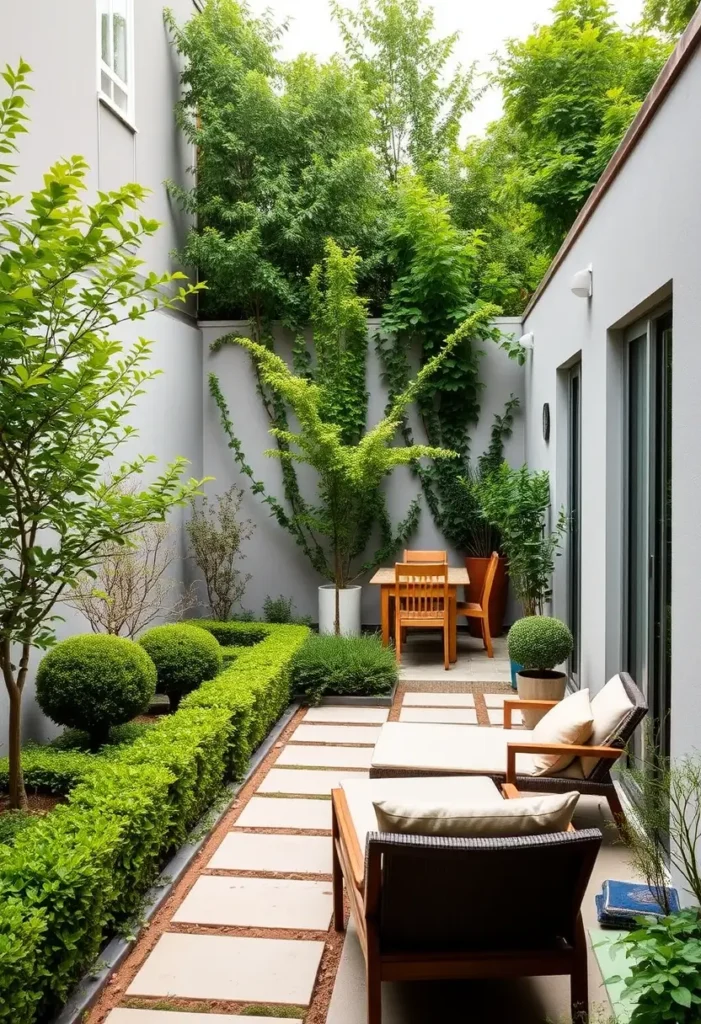
In a narrow backyard, utilize a long, straight pathway to draw the eye and create the illusion of greater length. Border the pathway with a low hedge and taller plants to add depth.
25/25. Evoke Tranquility with Japanese-Inspired Elements
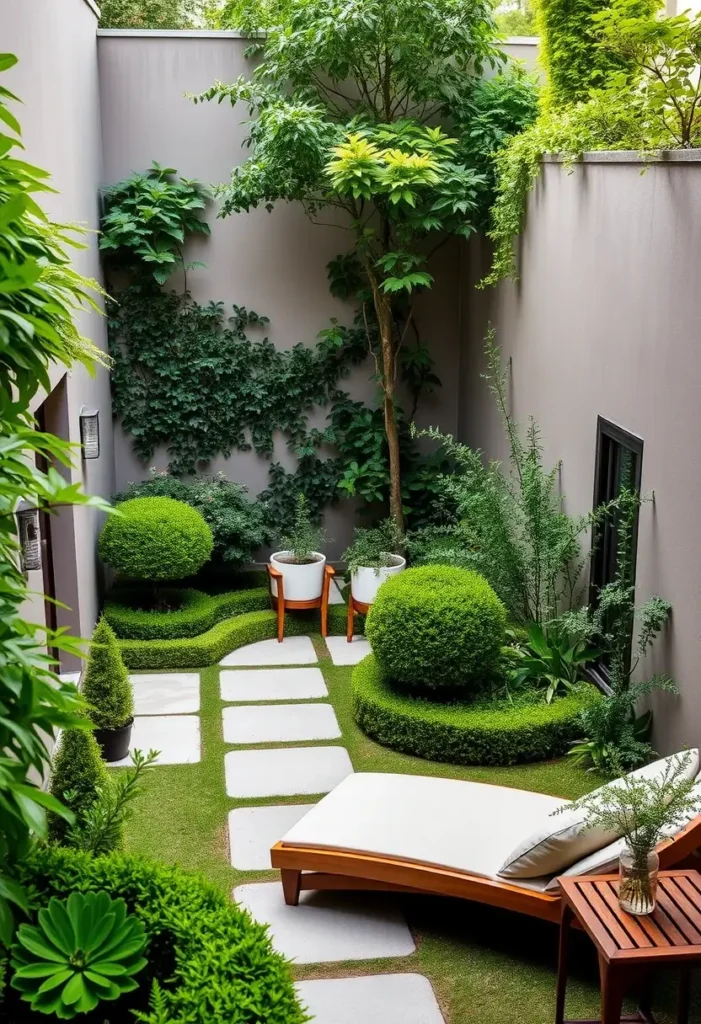
Introduce a sense of calm with carefully placed elements. These elements, combined with asymmetrical balance, can suggest a Japanese-inspired aesthetic, even within a modern courtyard setting and different kind of plants.
Conclusion:
From minimalist expanses of artificial turf to lush, layered plantings, modern courtyard gardens offer endless possibilities for creating a personal oasis. Whether you’re drawn to the clean lines of contemporary design or the sculpted forms of classic topiary, the principles of thoughtful planning and careful plant selection remain key. By embracing geometric precision, creative pathways, and strategic use of greenery – even incorporating elements like a perfectly circular lawn – you can transform your courtyard into a beautiful, functional, and inviting extension of your home. Start exploring these ideas and create an outdoor space you’ll truly love.
READ NEXT: 20 Modern Zen Courtyard Ideas for a Tranquil Outdoor Space
FAQs: Modern Courtyard Garden Design
What are the key elements of a modern courtyard garden?
Modern courtyard gardens typically emphasize clean lines, geometric shapes, a limited plant palette, and a balance between hardscape (paving, walls) and softscape (plants). Functionality and low-maintenance design are also common priorities.
How can I make my small courtyard garden feel larger?
Use light-colored paving and walls, incorporate vertical planting (vines, green walls), utilize mirrors strategically, choose furniture that’s appropriately scaled, and keep the design uncluttered. A well-defined pathway can also create a sense of depth.
What are some good low-maintenance plants for a modern courtyard?
Consider ornamental grasses, succulents, boxwood (Buxus), privet (Ligustrum), and certain types of bamboo. Drought-tolerant plants are ideal for reducing watering needs. Choose plants that are well-suited to your local climate.
How can I create privacy in my courtyard garden?
Tall hedges, climbing vines on walls or fences, strategically placed trees, and outdoor screens (wood, metal, or composite) are all effective ways to enhance privacy in a courtyard setting.
What type of lighting is best for a modern courtyard garden?
Subtle, ambient lighting is key. Use low-voltage LED lights to highlight pathways, accent plants, and create a warm atmosphere. Avoid harsh, overly bright lights. Consider uplighting trees or walls for dramatic effect.
Is artificial grass a good option for a courtyard garden?
Artificial grass can be an excellent choice for a low-maintenance, modern courtyard, especially in small spaces or areas with poor sunlight. Choose a high-quality product that looks and feels realistic.
How can I incorporate a water feature into a small courtyard?
Wall-mounted fountains, small reflecting pools, and compact container water gardens are all great options for introducing the element of water without taking up too much space.
What’s the best way to incorporate seating into a courtyard garden?
Choose furniture that’s proportionate to the space. Built-in seating (benches, ledges) can be a great space-saver. Consider multi-functional furniture, such as benches with built-in storage.
How can I make my courtyard garden interesting year-round?
Choose plants with varying bloom times and foliage interest. Incorporate evergreens for structure and winter color. Consider adding architectural elements, such as sculptures or interesting hardscape details, that provide visual appeal even when plants are dormant.
How do I get started with designing my own courtyard garden?
Start by assessing your space, considering your needs and preferences, and gathering inspiration (like from this article!). Create a basic plan, choose a color palette, and select plants and materials that are appropriate for your climate and the overall design aesthetic.

